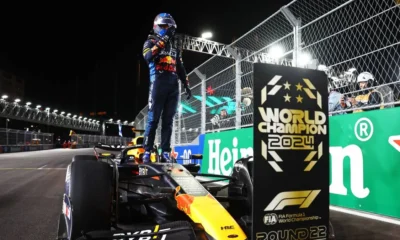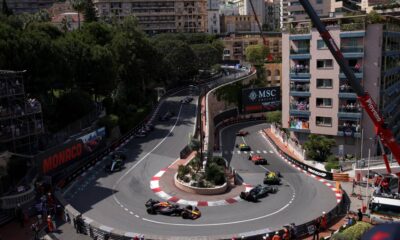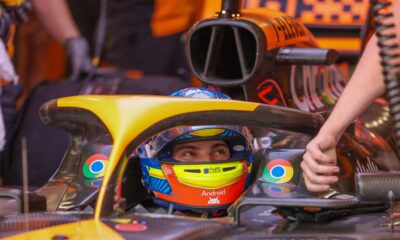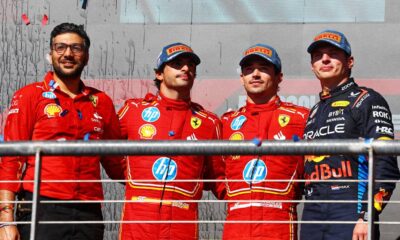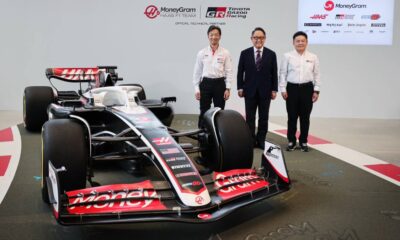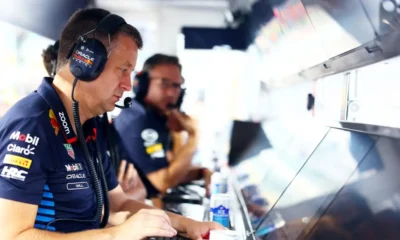More
Football VAR, budget caps or scoring adjustments: what are the most important changes to the sporting regulations for the 2022 season?
In addition to the technical rules, the sporting rules are also changing for the 2022 season. Of course, it is the technical parameters that are the most significant change as we enter the new era, but the FIA has also made changes to the rules due to the events of last year’s Abu Dhabi Grand Prix.
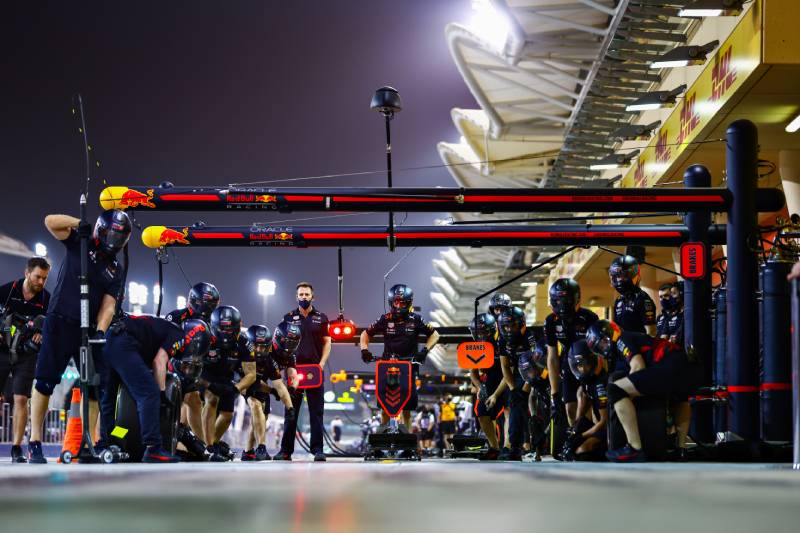
In addition to the technical rules, the sporting rules are also changing for the 2022 season. However, it is the technical parameters that are the most significant change as we enter the new era, but the FIA has also made changes to the rules due to the events of last year’s Abu Dhabi Grand Prix.
We wrote about the big changes in the technical regulations and the entry into the new era recently. However, Formula 1 is also facing changes to the sporting part of the rules.
Needless to say, some of them aren’t exactly small.
F1 Sprints
Somewhat big changes in the rules concern the sprints. For this season, the number of sprints has finally been reduced to 3. Fans will see the first sprint on 23 April at the Imola circuit on the occasion of the Emilia Romagna Grand Prix.
The second sprint will then be held at the Red Bull Ring in Austria and the third at Interlagos in Brazil. The sprint scoring in particular has undergone a major change. Last year, the winner of the sprint scored three points, the second-placed rider two points and the third-placed rider one point.
The big change then is that there will be eight riders scoring points at the finish of the sprint and they will split the points as follows. The winner will collect 8 points, second 7, third 6, fourth 5, fifth 4, sixth 3, seventh 2 and eighth 1.
The FIA’s reaction to last year’s Spa-Francorchamps (non-)race
Farce. That’s a simple way to describe the 2021 Belgian Grand Prix, which we wrote about more specifically in this article.
For example, if the race leader fails to complete at least two green-flag laps due to heavy rain and very poor racing conditions, no points will be awarded. If the leader completes more than two laps but less than 25% of the race length, points will be distributed as follows.
The winner of the race will be awarded 6 points, second 4 points and third 3 points. The driver who finishes fourth will receive 2 points, the last point will be awarded to the fifth placed driver.
If the race leader completes at least 25%, but less than 50% of the race length, nine drivers will score points at the finish of a particular grand prix – those on the podium will share the profit with thirteen, ten and eight points.
F1 will then award six points for fourth place and five for fifth, with the scoring continuing one point at a time up to that ninth place.
The last category then falls if the leading driver completes at least half the race, but still less than 75%. In this case, ten drivers are already scoring points in the classical way, and the points are distributed as follows according to the positions from first to tenth: 19, 14, 12, 9, 8, 6, 5, 3, 2, 1.
Above 75% of the race length, of course, full points are given out.
Tyre choices for the start of the race
As part of a change to the sporting regulations, the FIA has modified the rules on the necessity of fitting tyres from Q2 and hence Q3. Drivers are now free to choose which tyre compound they start the race on.
Under the previous rules, all drivers qualifying in the top ten had to start on the set they wore in Q2.
Budget ceilings
In 2021, the Queen of Motorsport introduced budget caps that teams had to adhere to, capped at $145 million. For the 2022 season, however, that amount is dropping, specifically by five million.
This provision is to help stop the domination of one or more teams. An equally important question, however, is whether this is even possible. The owner of Formula 1 (Liberty Media) has taken inspiration from competitions such as the NHL, NBA and NFL.
Areas such as design, race operations, component manufacturers, testing and above all monpost development are all factored into that limit. However, marketing, travel or driver salaries do not enter the cap.
Violation of the budget cap will result in various sanctions and fines, possibly also a ban from the grand prix, or for a bigger offense, outright disqualification from the World Championship.
Safety car
The FIA has also debated the deployment of a safety car during races. Especially in response to the events of last year’s Abu Dhabi Grand Prix.
The International Automobile Federation has modified the rules in the article so that no more monocars can interfere with the leaders’ racing.
This means that the standard safety car procedure must indeed be completed, whereby all those a lap behind must be overtaken by the safety car in order for the Grand Prix order to be correct and for the cars to be lined up in the correct order. Otherwise the race cannot be restarted.
For example, as mentioned by F1 Sport, the current sporting regulations, specifically article 55.13, say the following.
If the race director deems it safe to do so, and the message “cars a lap back may now overtake” has been sent to all competitors via the official messaging system, all cars that have been passed by the leader by a lap must pass the leading cars and the safety car.
However, the modification is only that the FIA has replaced the word “any”, which was originally in the above interpretation of the rules, with “all”, which is in fact indicated in bold in the text.
Virtual Racing Control
In addition to their directors, Formula 1 races will also be supervised by a new VRC (Virtual Race Control), which will very likely be based in Geneva, and which is intended to perform a similar function to that of a video assistant referee in football.
Even Ben Sulayem himself in his statement compared this new system to football’s VAR.
“Just as the VAR system works in football, the VRC will be located outside the race circuit and will assist the race director in making decisions, helping him apply the sporting regulations in real time thanks to this state-of-the-art technology, explains Mohammed Ben Sulayem in the above statement.
And it also states that direct radio communication between the race director and the teams will be removed from the TV broadcasts.
Michael Masi quits, F1 will have two directors
The new directors will then be Niels Wittich (DTM) and Eduardo Freitas (WEC, Le Mans). They will alternate in this role for the 2022 season, with Herbie Blash, who is Charlie Whiting’s former deputy, also acting as an advisor.
Anyway, we wrote more about Masi’s end as race director here.
Tighter restrictions on aerodynamic testing
However, another new regulation that came into effect last season was a sliding scale in terms of aerodynamics testing – a combination of wind tunnel time and CFD based on where a team finished in the Constructors’ Cup.
The deciding factor, of course, is the last season’s placings. And this year, those restrictions are even tighter.
Compared to last season, the so-called “benchmark team” is the one that finished seventh in the Constructors’ Cup. It is the seventh-placed team that gets 100% of the allotted time, after which the teams are divided into five-percent intervals.
This means that the winner of the Constructors’ Cup gets only 70%, whereas the last team gets 115%.
New weekend format
In this case, there is no significant change. Outside of the sprints, the format has been adjusted so that Friday practice starts at a later time, mainly to reduce time. The two one-hour practice sessions will be maintained, with teams performing media duties in the morning.
Mandatory rides for rookies
In previous years, it was a major problem for young drivers to even try out a Formula 1 car due to the lack of opportunities.
The new regulations are designed to ensure that every team must arrange for a young driver to take part in at least two first practice sessions during the season. This means that every team must guarantee a chance to a driver who has started in fewer than two Grands Prix.
It is then up to the individual teams when they decide to use these mandatory training sessions. So changes can occur before each race weekend, rookie rides can be spread out over the year.
Sources

